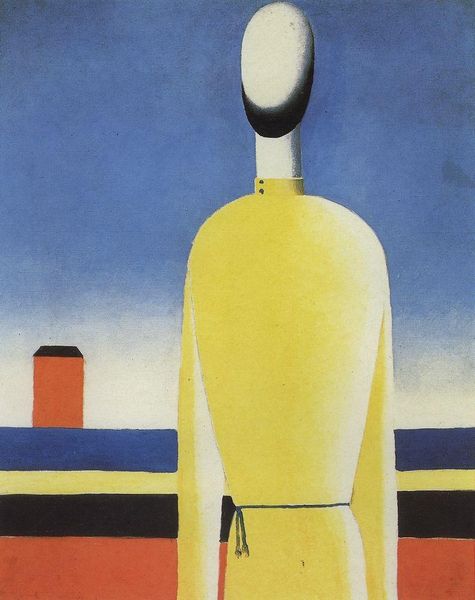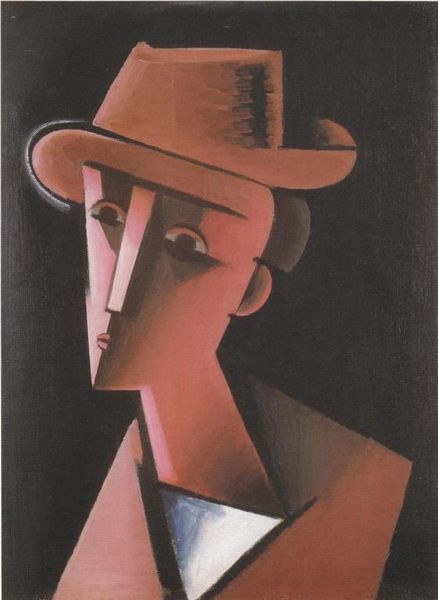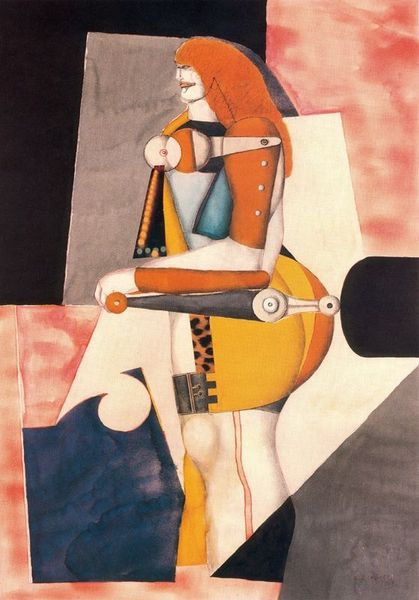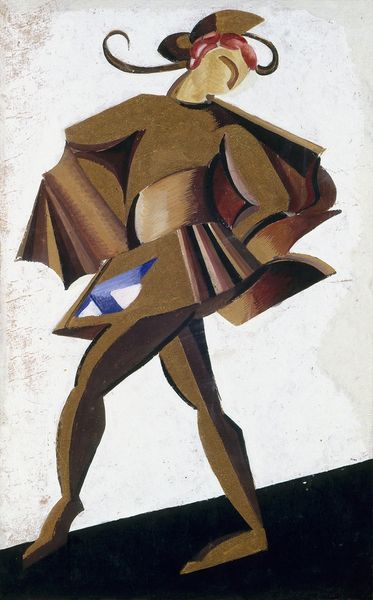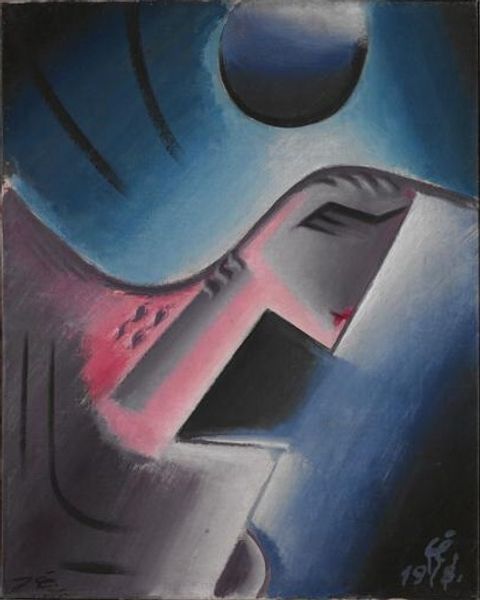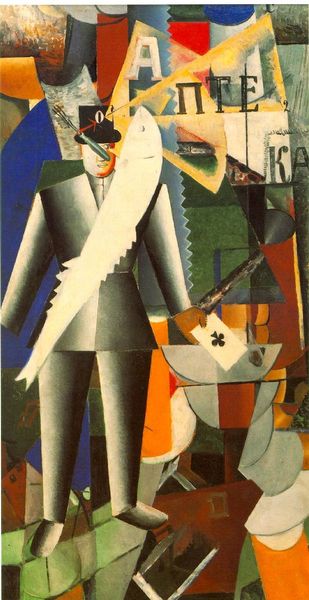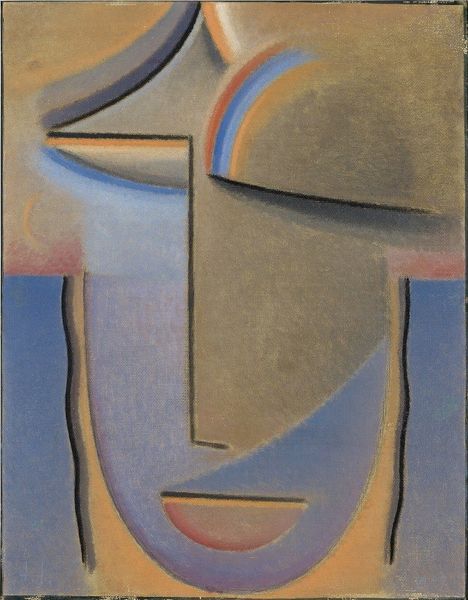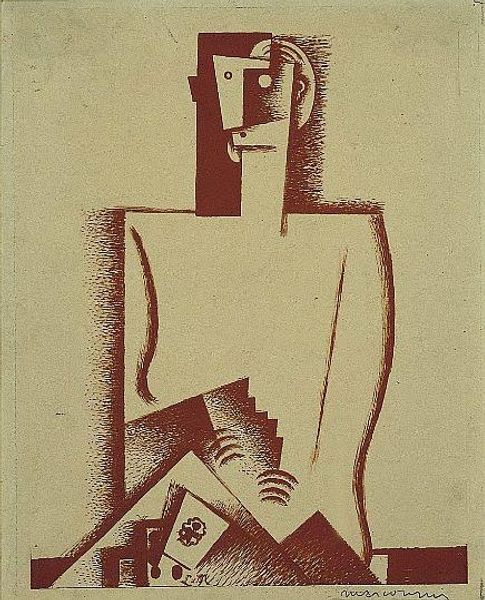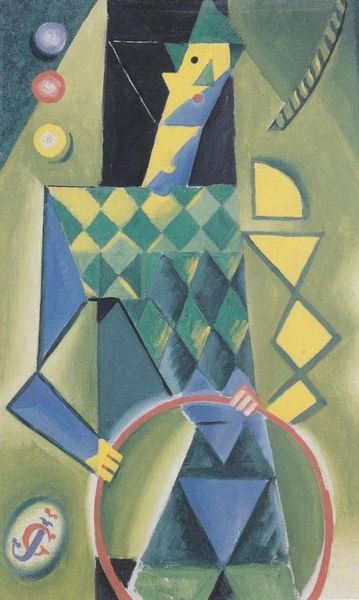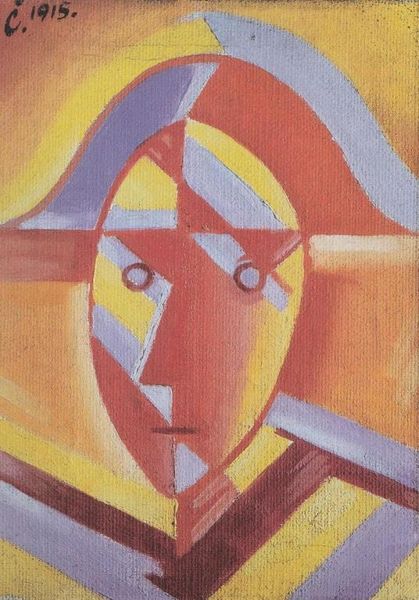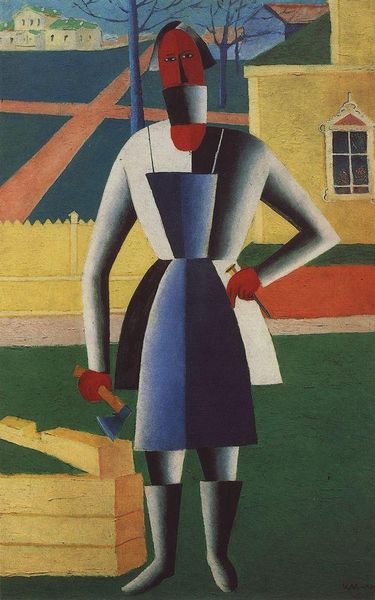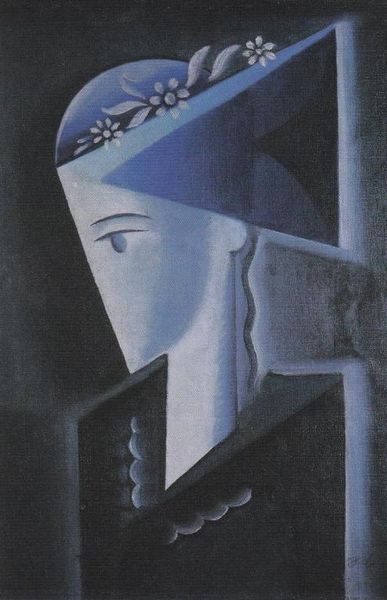
painting, acrylic-paint
#
portrait
#
cubism
#
acrylic
#
painting
#
pop art
#
acrylic-paint
#
figuration
#
neo expressionist
Copyright: Public domain
Curator: Here we have Josef Čapek's painting, "Plavec," from 1914. Editor: Well, that's… geometric. Almost clinical, wouldn’t you say? The stark blue and pink palette, those sharp angles—it evokes a sense of detached observation. Curator: Indeed. The Cubist style fragments the human form into simplified, almost architectural components. Observe how the torso becomes a series of intersecting planes and triangles. Čapek seems less interested in representational accuracy and more focused on the formal qualities of shape and color. Editor: But even within that Cubist framework, the materiality is key. Look at how thickly the acrylic paint is applied. This wasn’t just about deconstructing form, it was also about the very act of applying layers of color to build the composition. There's a sense of almost aggressive construction with the materials. Curator: A crucial observation. The limited palette—essentially shades of blue and red—and the hard edges certainly lend themselves to an understanding of structure and form within the Cubist idiom. Note the red stripes below the waist; they add an almost whimsical, decorative touch against the otherwise cool detachment. Editor: Those stripes… They disrupt the geometric purity, yes, but they also speak to a specific craft, a certain kind of labor—think of the mass production of striped fabrics at the time. This piece flirts with high art but it can't deny the underlying visual references to common, mass-produced items. Curator: An intriguing connection! One could argue that the geometric stylization creates a distancing effect, preventing an emotional reading of the figure. Editor: Or perhaps it reflects a dehumanizing aspect of early industrial labor? These forms, rendered through mass produced materials like paints, may point to a kind of worker alienation. Curator: The stark juxtaposition of geometrical form and limited palette clearly challenges the viewer. Its austerity seems both innovative and unsettling in its formal presentation. Editor: Absolutely. I leave now feeling less sure whether it is portraiture of the subject and instead something altogether about making, seeing, and the context of its era.
Comments
No comments
Be the first to comment and join the conversation on the ultimate creative platform.
